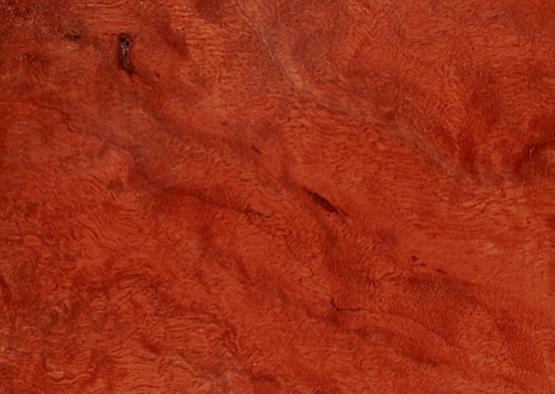The timber of the iconic river red gum has a reputation for durability, strength and for its distinctive brilliant red colouring ranging from pink to almost black.
Blue Gum, Red Gum, Murray River Gum, yarrow, Eucalyptus Rostrata
Eucalyptus camaldulensis

Shrinkage
| Very Low | Low | Medium | High | Very High | |
|---|---|---|---|---|---|

|

|
||||
Tangential : |
8.90%
|
||||
Radial : |
4.40%
|
||||
Unit Movement Tangential: |
0.31%
|
||||
Unit Movement Radial: |
0.22%
|
Strength Group

Very High |
High |
Reasonably High |
Medium High |
Medium |
Reasonably Low |
Low |
Very Low |
||
Unseasoned: |
S1 |
S2 |
S3 |
S4 |
S5 |
S6 |
S7 |
S8 |
|
|---|---|---|---|---|---|---|---|---|---|
 |
|||||||||
Seasoned: |
SD1 |
SD2 |
SD3 |
SD4 |
SD5 |
SD6 |
SD7 |
SD8 |
|
 |
Stress Grade

| Structural No. 1 |
Structural No. 2 |
Structural No. 3 |
Structural No. 4 |
Structural No. 5 |
|
Unseasoned: |
F11 |
F8 |
F7 |
F5 |
F4 |
Seasoned: |
F17 |
F14 |
F11 |
F8 |
F7 |
Density per Standard

Seasoned: |
910kg/m3
|
|---|---|
Unseasoned: |
1140kg/m3
|
Joint Group

Very High |
High |
Reasonably High |
Medium |
Low |
Very Low |
|
Unseasoned: |
J1 |
J2 |
J3 |
J4 |
J5 |
J6 |
|---|---|---|---|---|---|---|
 |
||||||
Seasoned: |
JD1 |
JD2 |
JD3 |
JD4 |
JD5 |
JD6 |
 |
Colour

| White, yellow, pale straw to light brown | Pink to pink brown | Light to dark red | Brown, chocolate, mottled or streaky | |
 |
||||
Mechanical Properties
Modulus of Rupture - Unseasoned: |
64
|
|---|---|
Modulus of Rupture - Seasoned: |
101
|
Modulus of Elasticity - Unseasoned: |
8
|
Modulus of Elasticity - Seasoned: |
11
|
Maximum Crushing Strength - Unseasoned:  |
33
|
Maximum Crushing Strength - Seasoned: |
55
|
Impact - Unseasoned: |
11.6
|
Impact - Seasoned: |
8.6
|
Toughness - Unseasoned: |
Medium - 15 - 24 Nm
|
Toughness - Seasoned: |
Low - up to 15 Nm
|
Hardness - Unseasoned: |
6.8
|
Hardness - Seasoned: |
9.6
|
Durability
| Low | Moderate | Reasonably High | High | |
| (0 - 5 yrs) | (5 - 15 yrs) | (15 - 25 yrs) | (more than 25 yrs) | |
In-Ground: |
 |
|||
| (0 - 7 yrs) | (7 - 15 yrs) | (15 - 40 yrs) | (More than 40 yrs) | |
Above ground: |
 |
|||
| (0 - 20 yrs, usually < 5) | (21 - 40 yrs) | (41 - 64 yrs) | (More than 60 yrs) | |
Marine Borer Resistance: |
 |
Lyctid Borer Susceptibility: |
Susceptible |
|---|---|
Lyctid Borer Susceptibility - Other: |
|
Termite Resistance: |
Resistant
|
Fire Properties
| 0 | 1 | 2 | 3 | 4 | 5 | 6 | 7 | 8 | 9 | 10 | |
EFH Spread-of-Flame Index: |
|||||||||||
EFH Smoke-Developed Index: |
Critical Radiance Flux - Lower: |
>2.2 and <4.5 |
|---|---|
Critical Radiance Flux - Higher: |
≥4.5 |
Smoke Development Rate: |
<750
|
| 1 - non-combustible | 2 - reasonably non-combustible | 3 - slightly combustible | 4 - combustible | |
Fire Properties Group |
Average Specific Extinction Area: |
<250
|
|---|---|
Bushfire Resistance: |
BAL 12.5, 19 and 29 – All AS3959 required applications
|

Joinery

Decking

Retaining Walls (Landscaping)

Structural Timber Poles
Allied Forest Products
Australian Timber

Branches Timbercraft

Cameron's H Hardware

Classy Timber Flooring

Creative Timber World
Decking Perth
Dekhar Outdoors

FloorVenue

Garde Timber Pty Ltd
Hammer Roo

Mathews Timber Pty Ltd

Matilda Veneer

Meyer Timber Pty. Ltd.

Nuline Cabinets

Outlast Timber Supplies
Ryan & McNulty Pty Ltd

Thor’s Hammer

Three(3)DM Pty Ltd






